April 20, 2024
Coast-to-coast: San Francisco to Savannah (Part 20)
By Simon J. Lau

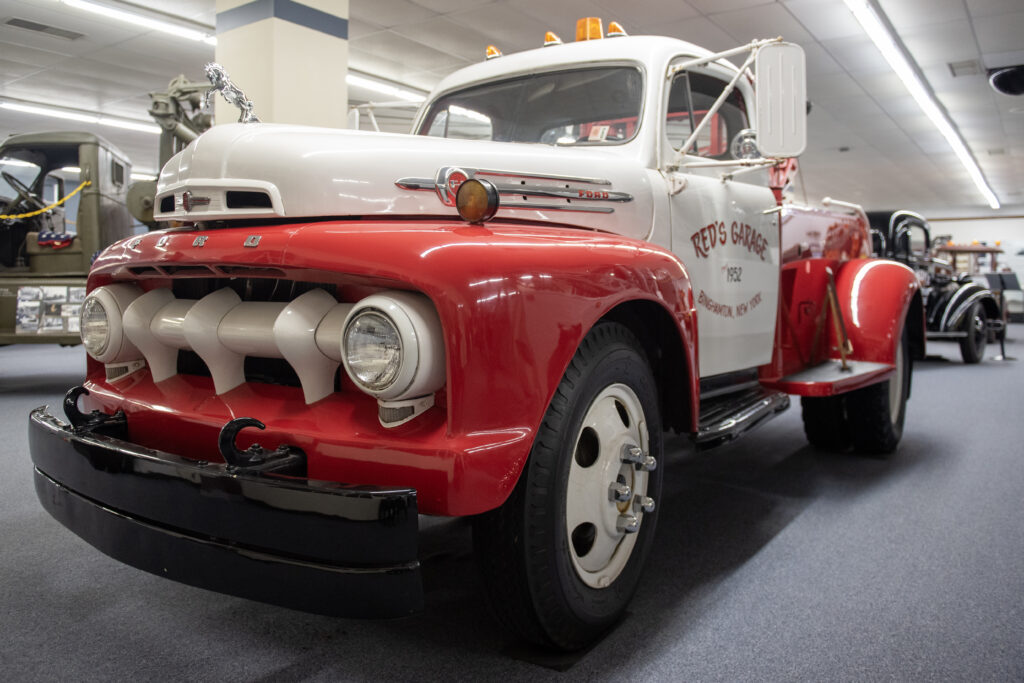

Before leaving Chattanooga, we visited The International Towing & Recovery Museum this morning. It’s dedicated to preserving the history of the towing and recovery industry, featuring a collection of vintage tow trucks, equipment, and memorabilia showcasing the evolution of towing technology. One little-known fact is that Chattanooga is credited as the birthplace for tow trucks, which is partly why this museum is found here.
Random, I know, but this museum had amazing reviews, and I’m so glad that we visited! First, it was dog-friendly. Second, it was the first museum we’ve visited on this trip that has truly embraced its DNA and doesn’t venture off into faraway collectibles that have nothing to do with its core focus. In this case, it focuses exclusively on tow trucks (with a very small collection of related historic service stations).
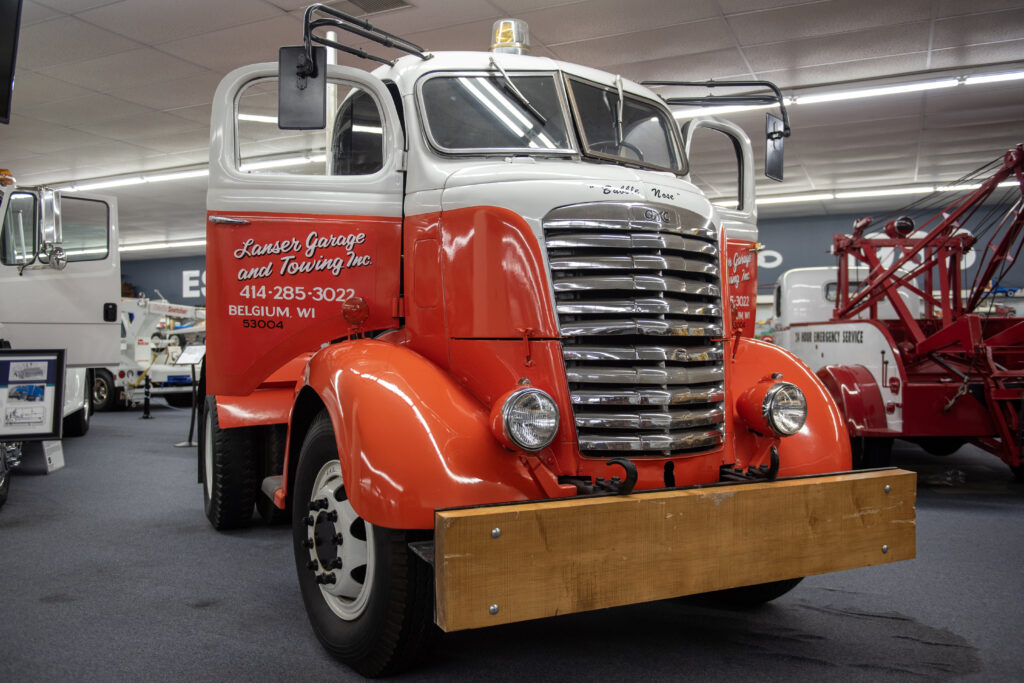
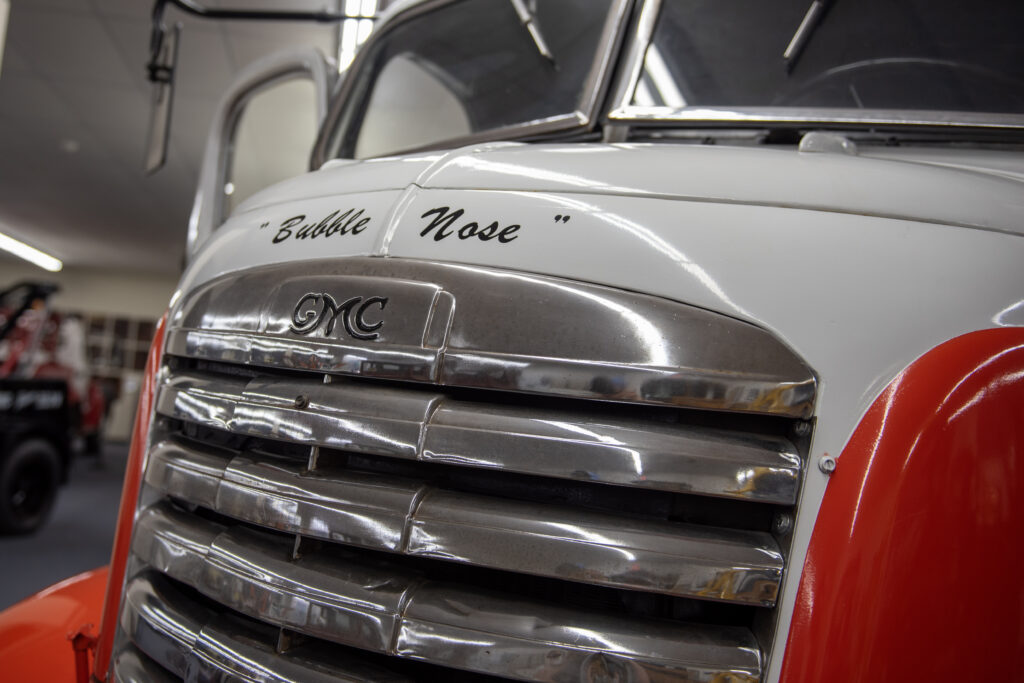
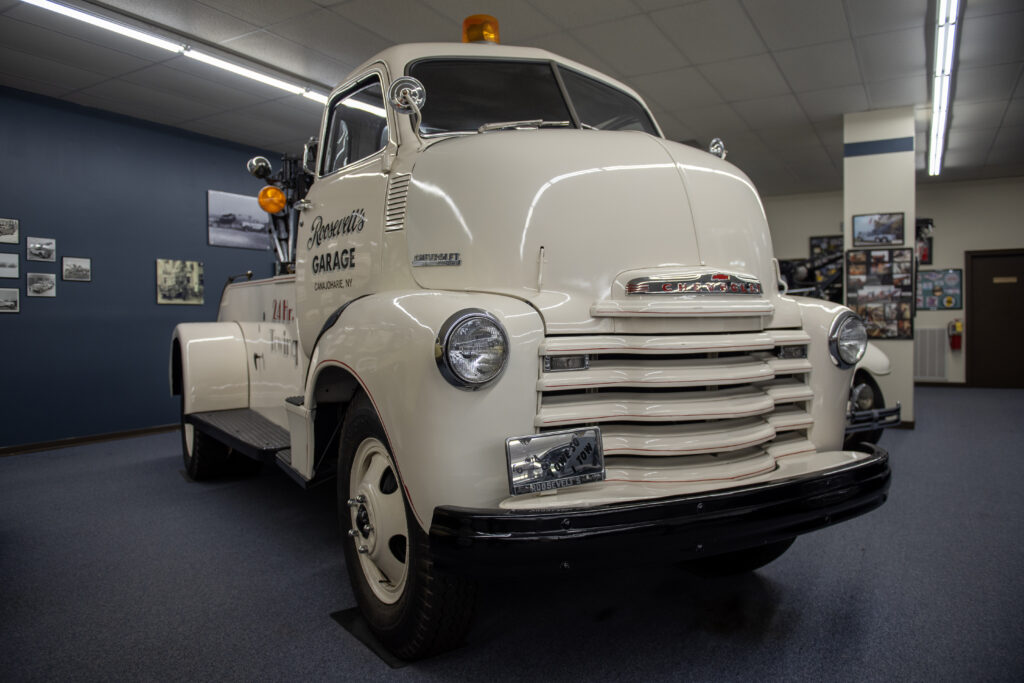
My favorite vehicle was this GMC Bubble Nose truck. Produced in the late 1940s and early 1950s, they are notable for their iconic design featuring a distinctive rounded front grille resembling a bubble. Beyond their visual appeal, these trucks employed an innovative cabin over engine (COE) configuration, positioning the driver and passengers directly above the engine for maximized cargo space and maneuverability, particularly in urban settings. This design extended to the Chevy nameplate (third photo in this section), since both were part of General Motors.
The first time I ever heard of a COE (or similar) design was when I saw this video about the differences between American and European semi-trailer trucks. In Europe, their semis are COEs, whereas in the US, our semis are conventional bonneted trucks, where the cabins are behind the engines. Much, if not all of this is due to regulation. However, it was fun for me to see where COE designs originated (from the Bubble Nose)!

Another vehicle I liked was this Indian Dispatch-Tow motorcycle. Introduced in the 1910s, it was designed as a rugged and reliable motorcycle specifically for towing purposes. The Dispatch-Tow was equipped with a reinforced frame, a heavy-duty suspension, and a powerful engine capable of hauling heavy loads. It gained popularity among military and civilian users alike for its versatility and durability, serving as a dependable workhorse in various applications such as military logistics, law enforcement, and commercial towing. It looked very similar to the Harley-Davidson Servi-Car we saw at the Tallahassee Automobile Museum.
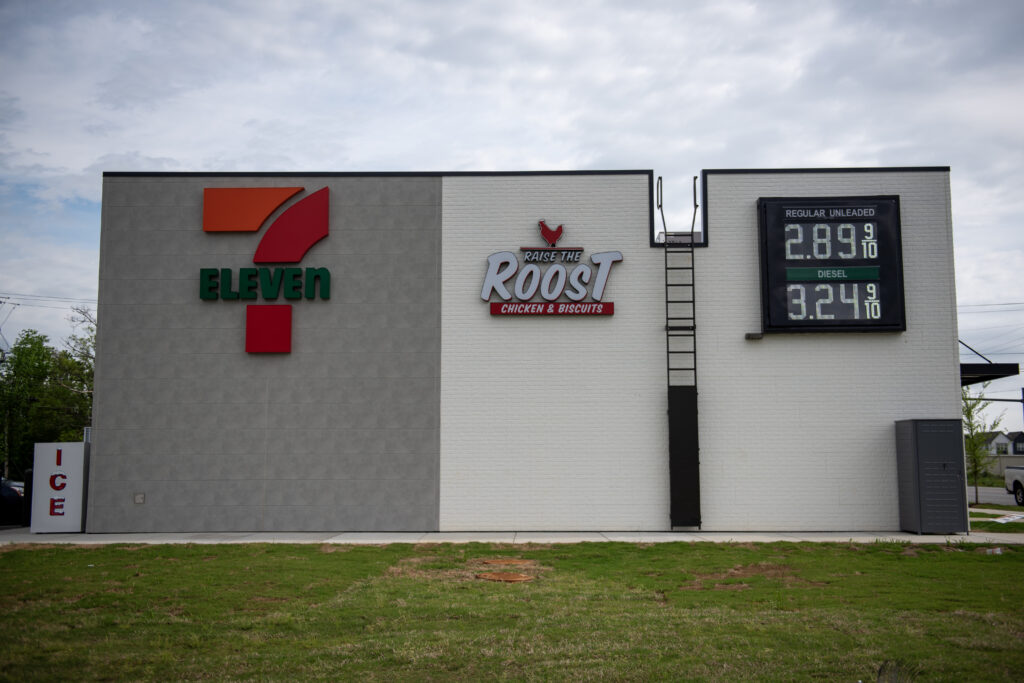
I should note, this was the price of gas when I left Chattanooga. In fairness, this is the lowest price I’ve seen on this trip, although $3.10-$3.30 has been average. Comparing this to California, where prices are almost $5, I’m starting to really wonder why.
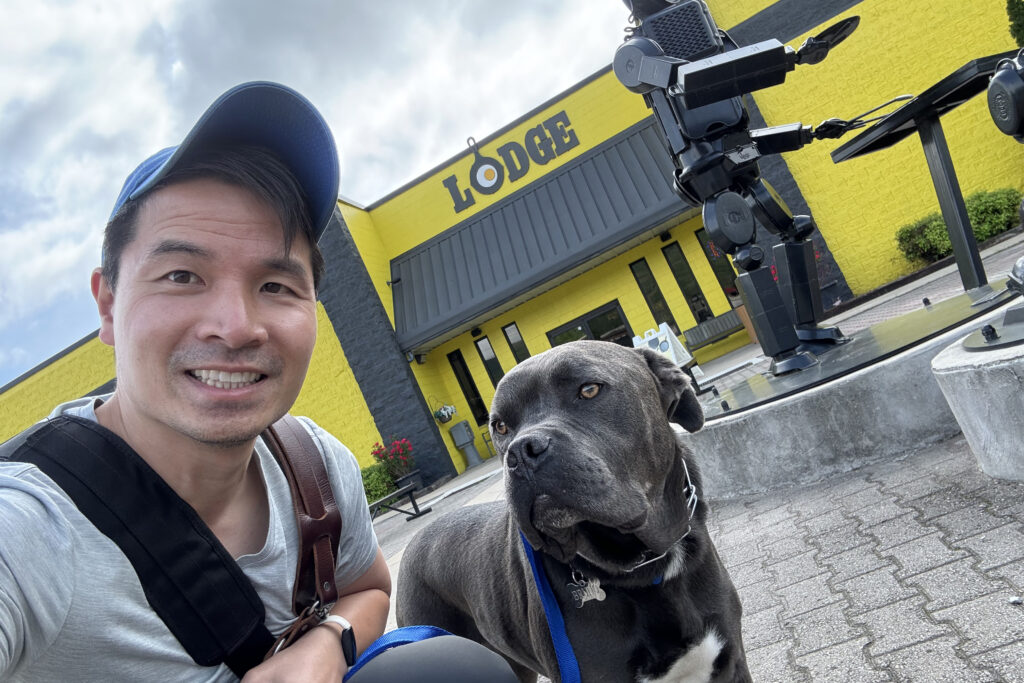

Soon after, we visited the Lodge Museum of Cast Iron. Lodge Cast Iron was founded in 1896 by Joseph Lodge in South Pittsburg, Tennessee. Initially, a small foundry producing cast iron cookware, Lodge has since expanded its operations and product line. During World War II, Lodge shifted its focus to producing items for the military, contributing to the war effort. In the post-war era, Lodge experienced significant growth as demand for cast iron cookware surged. Today, Lodge remains a family-owned business, producing a wide range of cast iron cookware.
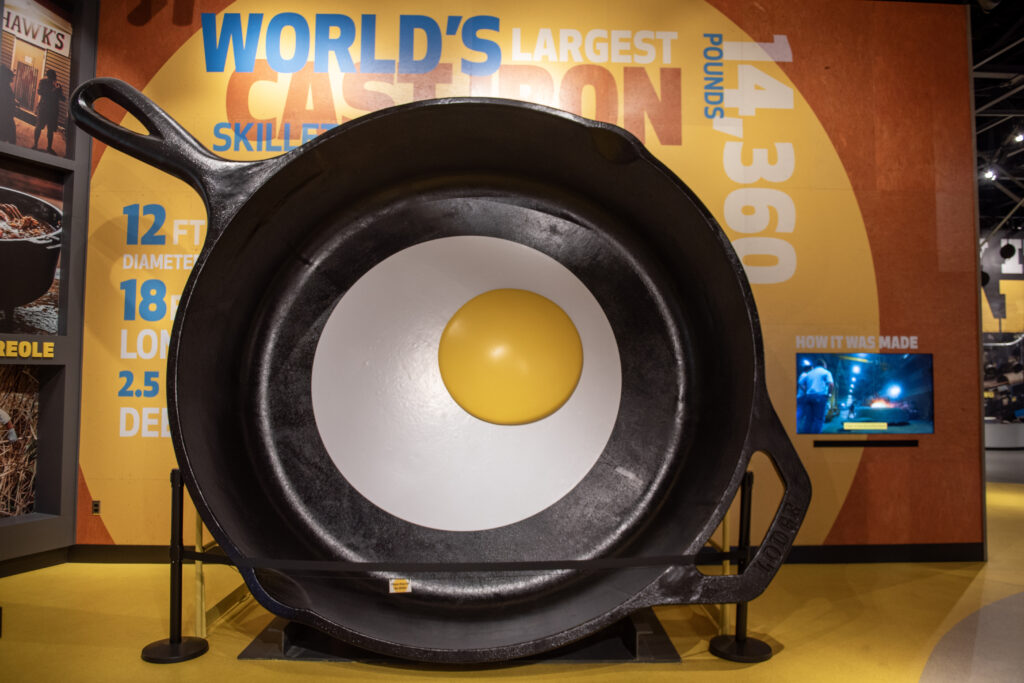

The museum was well done, albeit a tad small (especially for a $10 entrance fee). The highlight was the “world’s largest cast iron skillet,” which was huge. They also had a station where guests could try their hand at casting. This was my feeble attempt. As you can see, I was terrible.
Besides the hardware and manufacturing parts of the museum, I found the history of Joseph Lodge to be particularly compelling. Born in Pennsylvania, his father passed away when he was young. At age 15, he left for Cuba, where he worked on railroads before moving again to Peru. In 1876, at age 28, he returned to American and moved to Tennessee, where he found work in industrial sectors. The fact that he sought and gained so much international experience at that time totally blew my mind away. He was clearly someone who was open to new experiences and grand adventures. That alone makes me think he must have been a fascinating character and someone I would have loved to meet.
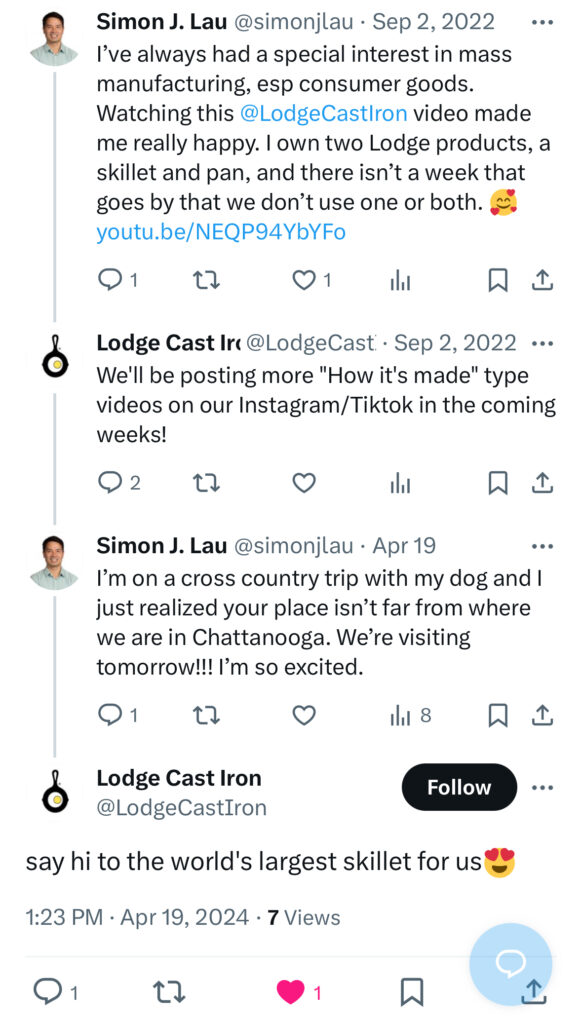
Fun fact: Several years ago, I stumbled upon this Eater video about Lodge and their manufacturing process. I liked it so much that I posted about it on Twitter (as a former Tweep, it’ll always be Twitter to me), and someone from Lodge responded. Yesterday, I replied to them years later, letting them know we were visiting today, and they replied to me again! Very cute!
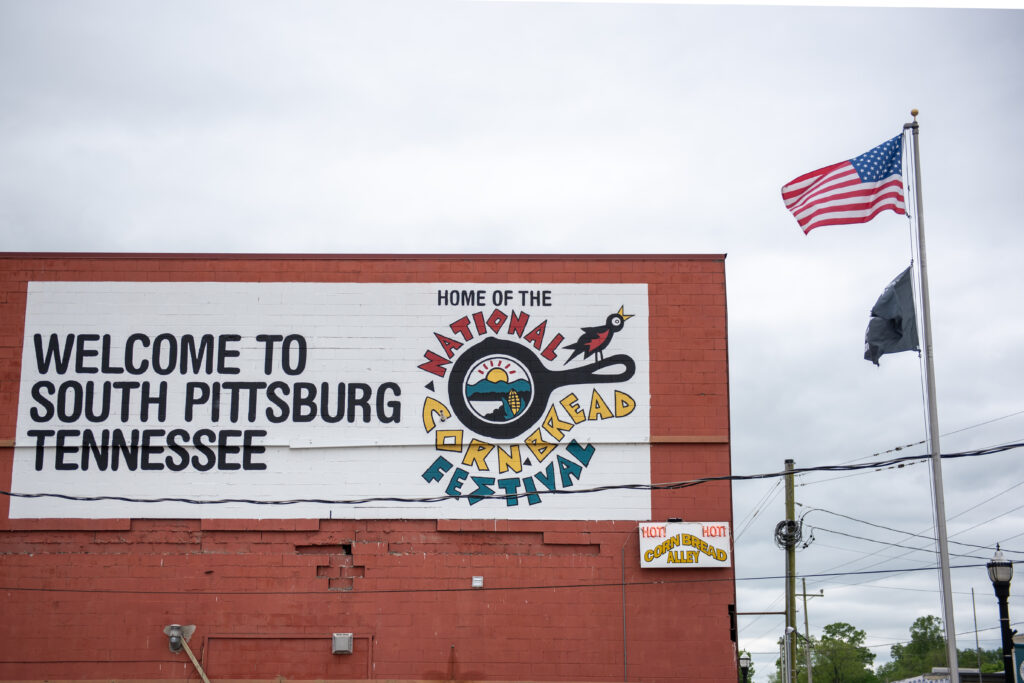
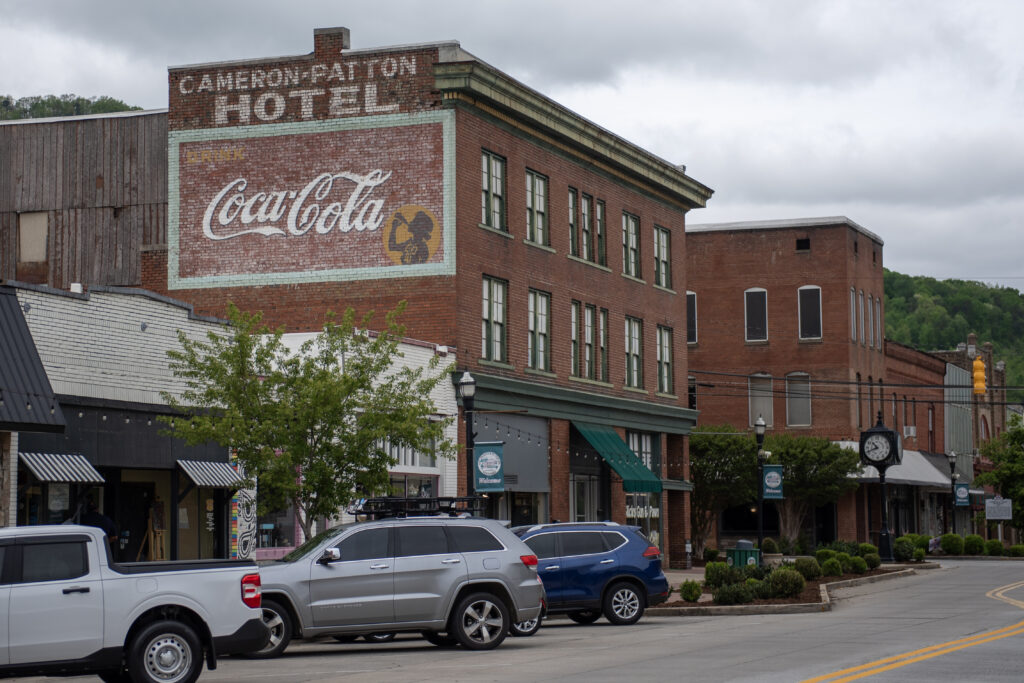

Since we were already in the neighborhood, we also took a stroll down South Pittsburg’s Historic Downtown. Originally inhabited by Native American tribes, the area saw European settlement in the early 19th century. The town’s growth accelerated with the establishment of iron foundries and furnaces in the mid-19th century, leveraging the region’s abundant natural resources. South Pittsburg played a pivotal role in supplying iron and steel during World War II, contributing to the war effort. Although today it’s a shell of its former self, it prides itself on being the home of the National Cornbread Festival. With that and Lodge, I guess it boasts more than most small towns can claim.
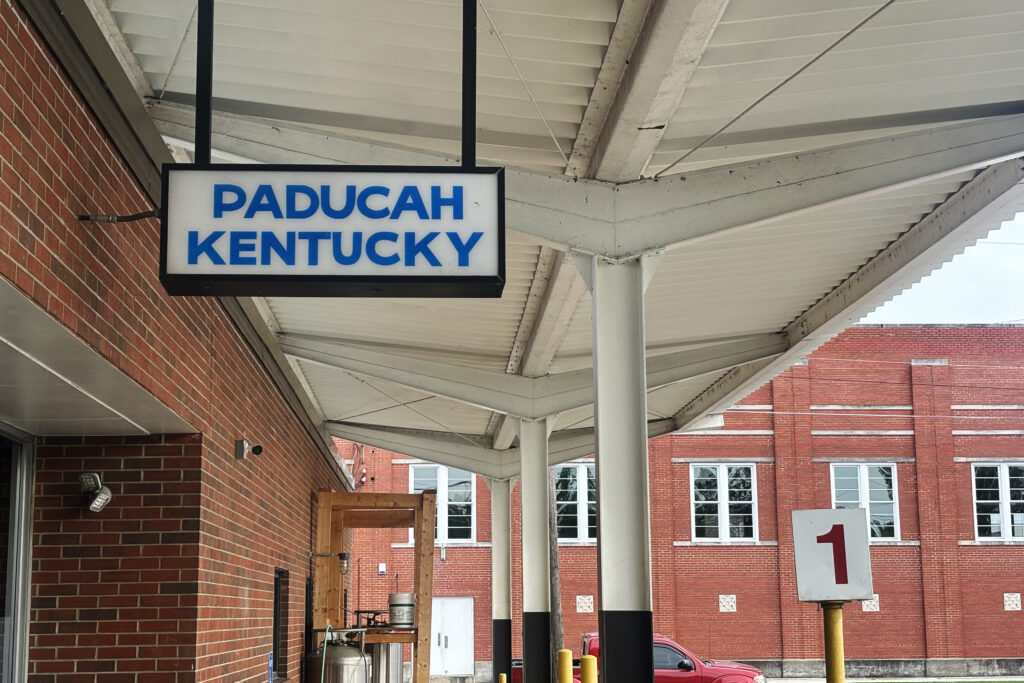
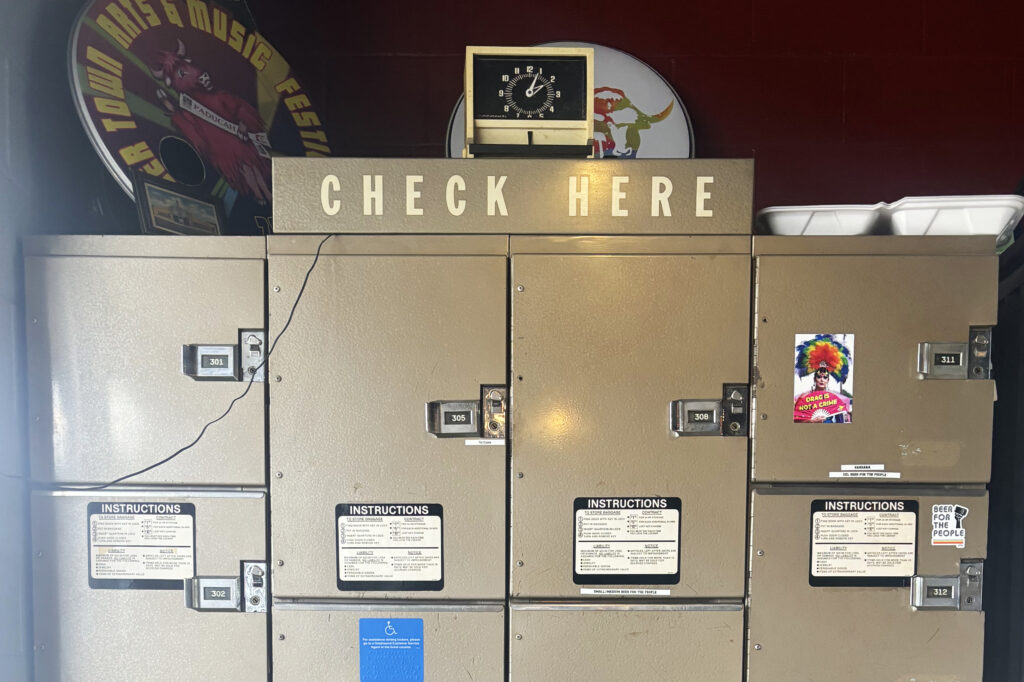

In the afternoon, we arrived in Paducah. I’ll provide a proper introduction to this town tomorrow! In the meantime, here are photos from dinner at Paducah Beer Werks. This microbrewery is housed in a former Greyhound bus station. The restaurant owners have preserved many of the original features, such as the bus bay, lockers, and information signage, which maintains the nostalgic feel of the old building.


I ordered pizza. It was great, but way too much! In the end, I had to pack half of it to take home. Here I am doing a terrible job of packing it away (I asked for too small of a pizza box). Bruno is looking to see if he can help me right-size the packaging by offering to take a slice off my plate. 😈

Finally, our route from Chattanooga and South Pittsburg to Paducah (272 miles or 438 km).

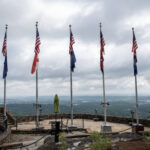


Comments are closed.